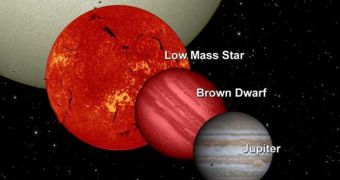Experts believe that the possibility of another star existing within our solar system may not be as remote as initially thought. Experts believe that a dark body, several times the mass of Jupiter, may be making its way through our surroundings, at times kicking comets within the inner solar system. The body, called “Nemesis” or “The Death Star,” may be a yet-undetected red or brown dwarf star that is very cold, and therefore out of the viewing range of infrared telescopes, Space reports.
Over the years, many experts have proposed that a hidden star in the solar system may be responsible for the mass extinctions on Earth. Some scientists have suggested that these events take place in 26-million-year intervals, and that they may be caused by the disturbances triggered by the interactions between the Sun and Nemesis. The comets that pose the most threats to the Earth come from the Oort Cloud, which is a massive collection of icy bodies that lurks in the outer fringes of the solar system. If a large, brown dwarf indeed roamed around them, then this would explain why they are periodically stirred.
While the scientific debate on whether a dark companion to the Sun is causing mass extinctions on Earth at predetermined intervals is far from over, experts now have other reasons to suspect such a rogue star. Researchers give the example of the Kuiper Belt object Sedna, which by all accounts shouldn't be at its current location. Mike Brown, the California Institute of Technology (Caltech) astronomer that found the body, says, “Sedna shouldn't be there. There's no way to put Sedna where it is. It never comes close enough to be affected by the Sun, but it never goes far enough away from the Sun to be affected by other stars.”
This celestial body completes one orbit around the Sun (one year) in 10.5 to 12 thousand Earth years, the expert adds. Only the external influence of another massive body on the outer fringes of the solar system would make sense of its orbit and behavior. “My surveys have always looked for objects closer and thus moving faster. I would have easily overlooked something so distant and slow moving as Nemesis,” Brown tells Astrobiology Magazine. “I think the possibility that the Sun could harbor a companion of another sort is not a crazy idea. There might be a distant object in a more stable, more circular orbit that has gone unnoticed so far,” Caltech expert Davy Kirkpatrick, who is based at the NASA Infrared Processing and Analysis Center, says.

 14 DAY TRIAL //
14 DAY TRIAL //